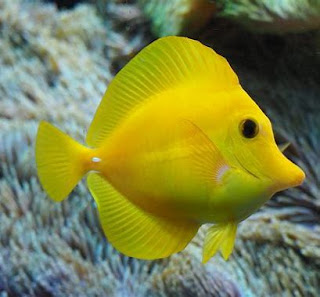Fast Facts: Giant Clam

Not something you'd find at your local buffet. The Giant Clam: Tridacna gigas Description : As the largest mollusks in the world, Giant Clams can reach a size of four feet long and weight of 500 pounds. A Giant Clam's main feature, its shell, is made up of two halves that can open and close through use of a hinge. Although their shells range in various sizes, colors, and patterns, all Giant Clams have a fleshy interior mantel that can weigh up to a quarter of the clam's weight! Habitat : These mollusks are primarily found in waters of down to 20 meters in depth in the Indo-Pacific region and other tropical and subtropical areas. Because of their shallow environment, Giant Clams thrive in coral reefs where they embed themselves into the sand. In particular, they thrive in habitats with high calcium carbonate levels that strengthen their shells. Diet : Through the filter feeding process, Giant Clams gain energy from their main diet of phytoplankton. However, Giant Clam


